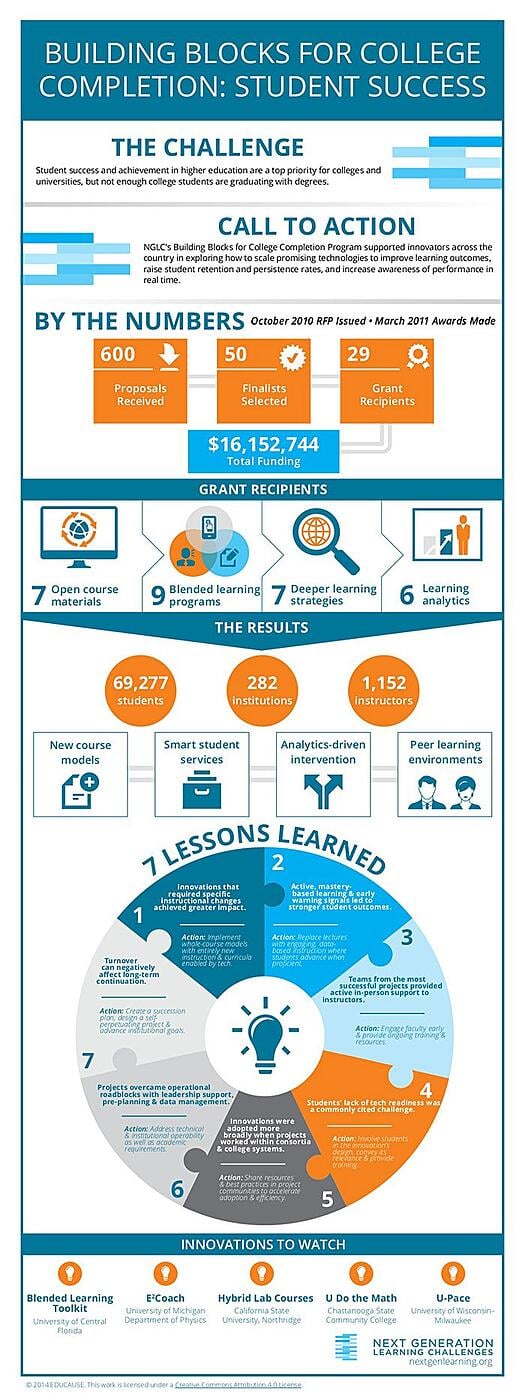How Technology Can Tip the Scales for Higher Ed
Did you have the chance to watch the CNN film, Ivory Tower, from director Andrew Rossi this week? The controversial film questions the value of a college education and the future of institutions of higher learning when student loan debt has surpassed $1.2 trillion and continues to grow at alarming rates.
The documentary did not paint an attractive picture of higher education to say the least, yet did not really offer any concrete solutions as to how to increase value for those currently enrolled or how to make college accessible to less advantaged students. I personally was disappointed that they didn’t mention some of the positive changes we’re seeing today to help address some of the most challenging issues.
For one, I’m excited to see so many change-seeking organizations and technologies that are making huge strides for positive change in higher ed. One notable example is the University Innovation Alliance, a consortium of leading institutions working together to explore innovative ways of making education more accessible and affordable.
At Echo360, we still believe in the power and value of a college education. And as a mother of twins in their senior year of high school, I still want this for my boys. But how can you improve the learning experience while keeping costs in check?
Technology can help improve student learning and literally give them “more bang for their buck” when it comes to ROI for tuition dollars, as shown in this info graphic from the Next Generation Learning Challenge (NGLC).

Technology can help instructors and institutions become more efficient by making learning more active and ensuring students are on track to on-time graduation. Technology as a solution to some of the issues facing higher ed was mentioned several times during Ivory Tower. In fact, one of the quotes that rang loud and clear was: “technology is something that every educated person should be armed with in the 21st century.”
One of the technology alternatives to traditional education featured in the film was the Massive Open Online Course, also known as a MOOC. And while MOOCs can open education to those who might not have the access or means otherwise, there are so many other pathways available to choose from courtesy of disruptive new technologies.
There is a digital learning explosion going on right now that can have an immediate impact in solving many of the issues facing higher education today. Of course I’m hyped about the new possibilities in digital learning as an employee of an ed tech company, but also because of the ways it can improve my sons’ learning. I didn’t exactly have the best learning experience being in a 600-person classroom back in the day, and my YouTube generation kids expect their education to fit their device-driven learning styles.
There are many transformative technologies available to help students learn more effectively, help teachers become more efficient, and make learning available and accessible to more students at a lower cost.
Technologies, such as the Active Learning Platform, make the learning experience more active and flexible by offering 24/7 access to course content. If I were able to review my lectures and class materials at my own pace, I’m pretty confident my grades would have been better while I tried to juggle studies, work and of course, some semblance of a college social life.
We all know today’s students wouldn’t even think of leaving home without their smartphones, laptops and tablets. But how cool would it be if they could use these devices to ask anonymous questions of their professors in their large classes? Even cooler, what if your professor had tools that would show him/her where you were confused in class before you actually failed an exam? I would have rejoiced for the chance to have that kind of learning experience in my college days, as attending office hours was always awkward for me and I’m sure the professor received the same questions at least 10 times that day!
These technologies open access to even more students through online courses, providing them with the same rich, interactive learning experience as their peers in the classroom.
So is a college degree worth it? A recent report by the Federal Reserve Board of San Francisco says yes. The report said that there is an $830,000 difference between getting a college education over just a high school diploma.
Yes, higher ed institutions are at a crossroads when it comes to serving their ultimate consumers – the tuition-paying student. But unlike their portrayal in Ivory Tower, all is not doom and gloom.
It’s an exciting time for institutions to leverage technology to enhance teaching and learning and create a more satisfactory experience for students that doesn’t involve shuttering doors, losing the valuable knowledge of tenured professors, or rendering the value of a college degree obsolete.
